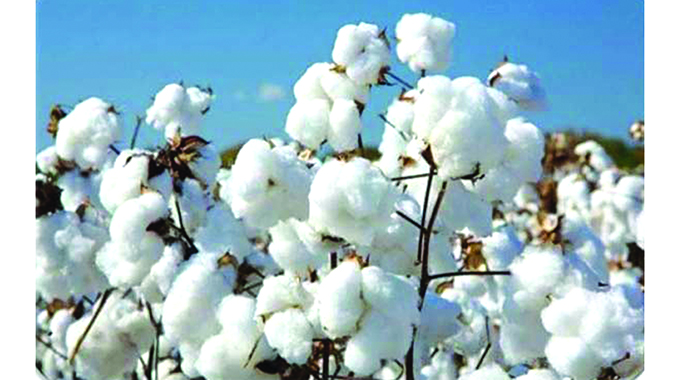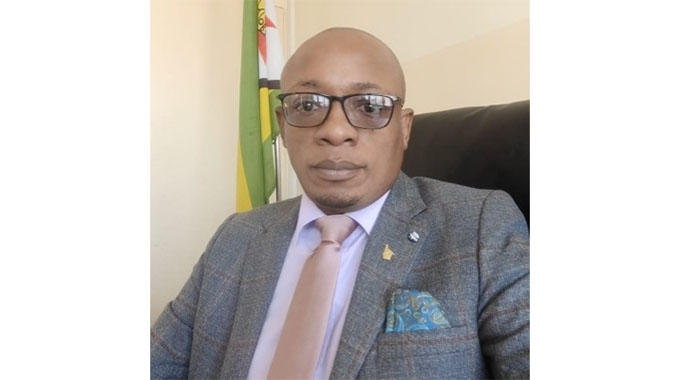Cotton contractors increased to boost production

Precious Manomano-Herald Reporter.
The number of cotton contractors for the present season has been increased from six to nine as part of a policy by Government towards increasing productivity levels by 10 percent in all crops.
The new contractors are the Agri Value Chain, Cangrow, and Galaxy Cotton and Innovative Cotton (Pvt) Ltd joining Alliance Ginneries/Roysen trader, Southern Cotton Management services, The Cotton Company of Zimbabwe (COTTCO), Zimbabwe Cotton Consortium and the New Cotton Company.
Besides the contractors there is, for the eighth straight season, the State-assisted scheme has seen smallholder cotton production recovering with these farmers getting free basal and top dressing fertiliser, seed as well as chemicals.
For larger growers, the Government also facilitates access to credit through banks and implements price support mechanisms to ensure fair prices for cotton farmers. Government also has a network across the country that provides extension services, training programmes and technical support to farmers to improve their farming practices and increase productivity.
Small-scale farmers have been receiving free cotton inputs under the scheme as part of efforts to increase the country’s cotton production and revive the industry which had almost collapsed.
Stakeholders have since indicated that they foresee an increase in cotton production this season following increase of contractors
Cotton Council of Zimbabwe Trust chief executive officer Eng Christopher Murove said it is a positive move to engage more contractors to create competitions that will lead to better prices.
“If the cotton contracting system was operating well in the sense that the contractors would give fair contracts and provide the farmer with the full inputs requirements, this would be a good development because it would mean healthy competition among the contractors who would be keen to keep their contracted farmers happy.
“However, in reality, the contractors have connived as a cartel to keep prices low so that they increase their profit margins. At the same time incidences of side marketing are likely to increase as the contractors will try to access the Pfumvudza cotton funded by Government through whatever means they can,’’ he said.
Cotton Producers and Marketers Association chairman Mr Stewart Mubonderi said quality services is likely to be achieved though competition among contractors, adding that Government should address problems of late payment modalities to motivate farmers.
“This is a good move because farmers can have contractors of their choice. Farmers are not paid on time. We urge our Government to intervene so that farmers get their money on time. This is critical because we are taking farming as a business. If farmers fail to get their money on time, side production will be the major problem as farmers will divert the inputs to other farming operations,’’ he said.
He also appealed to the Government to speed up distribution of inputs under Pfumvudza so that the smallholders fully engage in the new season.
This year Zimbabwe is targeting to get US$70 million from cotton lint exports.
Cotton is a major source of income for rural communities in these areas and the crop is usually grown under contract farming arrangements where contractors supply production inputs of seed, fertiliser and chemicals to farmers on loan.
At harvest, the contractor buys back the contracted seed cotton, deducts costs of the inputs and pays the contract farmer the remaining balance.
Cotton, the second most important cash crop in Zimbabwe, is grown by thousands of smallholder farmers on average plot sizes of about one hectare in the summer rainfall growing season (November to April).
Cotton is grown in four main regions of the country that are hot and receive rainfall of between 400mm and 600mm per annum, much in the central and north-west of the country in the Midlands province covering areas in Gokwe South and Gokwe North, where the bulk of cotton production takes place, the northern part of the country in parts of the Mashonaland Central province around Muzarabani, Mahuwe, and Mushumbi, the south-easte in the lowveld in the Manicaland province and Masvingo provinces covering areas around Checheche, Mwenezi and Chiredzi and then Binga in the Zambezi Valley of Matabeleland North.









Comments